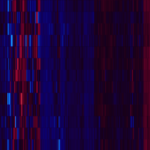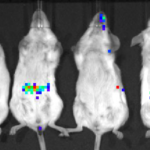Link to Pubmed [PMID] – 27140611
Link to DOI – 10.1073/pnas.1523899113
Proc Natl Acad Sci U S A 2016 May; 113(20): 5706-11
Listeria monocytogenes is responsible for gastroenteritis in healthy individuals and for a severe invasive disease in immunocompromised patients. Among the three identified L. monocytogenes evolutionary lineages, lineage I strains are overrepresented in epidemic listeriosis outbreaks, but the mechanisms underlying the higher virulence potential of strains of this lineage remain elusive. Here, we demonstrate that Listeriolysin S (LLS), a virulence factor only present in a subset of lineage I strains, is a bacteriocin highly expressed in the intestine of orally infected mice that alters the host intestinal microbiota and promotes intestinal colonization by L. monocytogenes, as well as deeper organ infection. To our knowledge, these results therefore identify LLS as the first bacteriocin described in L. monocytogenes and associate modulation of host microbiota by L. monocytogenes epidemic strains to increased virulence.












